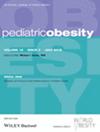Parental education and neighbourhood socioeconomic status in the prediction of childhood overweight: A multilevel analysis
Abstract
Objective
This study examined cross-level interaction between parental education and neighbourhood SES in predicting overweight including obesity among school-aged children.
Methods
This analysis used data from 19 984 children aged 5–6 years participating in the school-entry examination of the years 2015 to 2019 in the Aachen city region in Germany. We employed multilevel logistic regression models to predict overweight based on parental education and neighbourhood SES, along with their cross-level interaction, while controlling for several characteristics of the child.
Results
Children from families with intermediate (OR: 1.99; 95% CI, 1.65–2.40) and low parental education (OR: 2.55; 95% CI, 1.92–3.39) and from neighbourhoods with intermediate (OR: 1.25; 95% CI, 1.02–1.53) and low SES (OR: 1.61; 95% CI, 1.29–2.02) were at significantly higher odds for overweight. There was an indication of a cross-level interaction effect (p-value <0.10) to the disadvantage of children with higher parental education, suggesting that inequalities in overweight decrease in more deprived neighbourhoods. The predicted probability of overweight for children with high parental education increased from 6.4% in high SES neighbourhoods to 7.8% in intermediate and 9.9% in low SES neighbourhoods. Sensitivity analyses for obesity and a higher context level of spatial SES confirmed the results.
Conclusions
The results highlight the crucial role of both individual and contextual socioeconomic conditions in predicting childhood overweight. They also suggest that the impact of neighbourhood socioeconomic status on childhood overweight varies by parental education, particularly disadvantaging children with higher parental education, indicating a social contagion of overweight through spatial disadvantage.


 求助内容:
求助内容: 应助结果提醒方式:
应助结果提醒方式:


